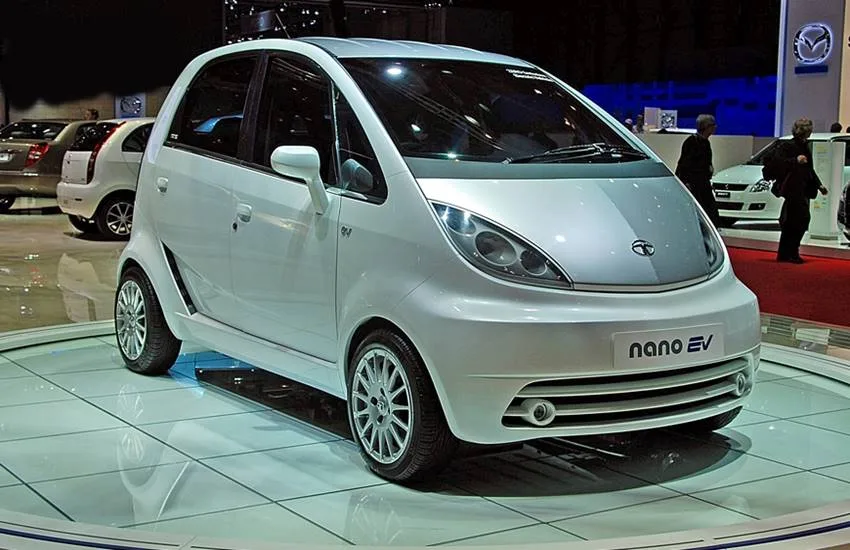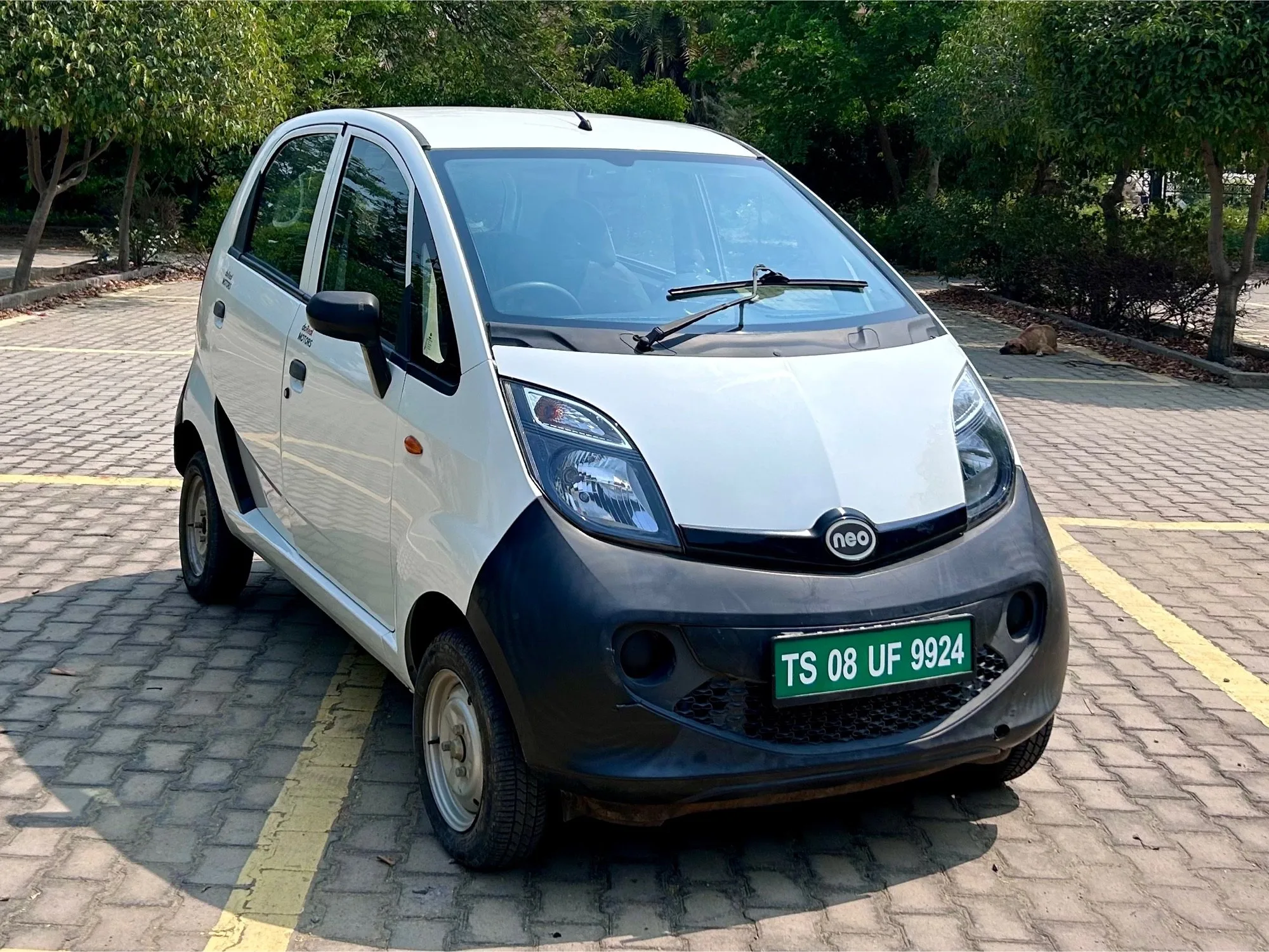In a move that has electrified the automotive industry, Tata Motors is preparing to resurrect one of India’s most recognizable vehicles in an all-new avatar. The Tata Nano EV represents a bold reimagining of the vehicle once known as the world’s cheapest car, now reborn with electric power and modern features to meet the demands of today’s environmentally conscious consumers.
The original Tata Nano EV captured global headlines in 2009 with its groundbreaking ₹1 lakh price tag, fulfilling Ratan Tata’s vision of creating an affordable four-wheeler for Indian families. Despite its initial promise, the Nano’s journey was marked by challenges that eventually led to its discontinuation. Now, as India embraces electric mobility, Tata Motors sees an opportunity to rewrite the Nano story with a zero-emission chapter.
“The Tata Nano EV represents a significant shift in Tata Motors’ approach to affordable mobility,” notes automotive analyst Rajesh Menon. “It’s not just about creating the cheapest electric car, but rather delivering value, safety, and modern features at an accessible price point.”
Contents
- 1 From People’s Car to Discontinued Dream: The Original Nano Story
- 2 The Electric Revival: What to Expect from the Tata Nano EV
- 3 Market Landscape: How the Nano EV Fits in India’s Electric Future
- 4 The Timing Question: When Will the Nano EV Arrive?
- 5 Beyond Transportation: The Broader Impact of Nano EV
- 6 FAQs About the Tata Nano EV
From People’s Car to Discontinued Dream: The Original Nano Story
The Tata Nano journey began with tremendous promise. When Ratan Tata unveiled his vision for a ₹1 lakh car, many industry experts deemed it impossible. Yet, in 2009, the original Tata Nano was launched as the world’s most affordable car, generating 200,000 pre-orders and international attention.
However, the initial excitement quickly faded. The Nano’s sales trajectory tells a sobering story:
| Year | Key Milestone | Details |
|---|---|---|
| 2009 | Market Launch | Launched as world’s cheapest car |
| 2010 | Sales Decline | Only 509 units sold by November |
| 2016-17 | Further Decline | Sales dropped to 7,591 units |
| 2018 | Final Phase | Production reduced to just one unit in June |
| 2019 | Discontinuation | Official end of production in April |
What caused this dramatic fall? The primary issue wasn’t the car’s engineering but its marketing. Being branded as the “cheapest car” became a liability in status-conscious India, where vehicles are often seen as symbols of social mobility. Safety concerns also plagued the Nano, with several reported incidents of cars catching fire and a zero-star rating in Global NCAP safety tests in 2014.
“Despite initial excitement, the Tata Nano faced challenges that led to its discontinuation in 2019,” explains automotive historian Vikram Singh. “The ‘cheapest car’ tag became a stigma rather than a selling point, and evolving safety regulations eventually made the original design untenable.”
The final blow came with new safety regulations in April 2019 requiring all cars to include ABS, which the Nano couldn’t accommodate without significant redesign and investment.

The Electric Revival: What to Expect from the Tata Nano EV
The anticipated Nano revival represents Tata Motors’ commitment to expanding its Tata EV car offerings while addressing the limitations that affected the original model. Unlike its predecessor, the Tata Nano EV electric car will incorporate essential safety features and modern amenities expected by today’s consumers.
Industry experts anticipate the Tata Nano EV to be priced between ₹6 lakh and ₹9 lakh, positioning it as an entry-level option in India’s growing electric vehicle market. While this is significantly higher than the original Nano’s price point, it remains competitive within the electric vehicle segment.
Expected Specifications and Features
| Feature Category | Expected Specifications |
|---|---|
| Price Range | ₹6 lakh – ₹9 lakh |
| Range | Over 200 km per charge |
| Seating | 4-seater configuration |
| Safety Features | Dual front airbags, ABS with EBD |
| Modern Amenities | Touchscreen infotainment, power windows |
| Charging | Fast charging capability |
| Battery Warranty | Expected 8-year warranty |
| Body Style | Modern hatchback design |
With an expected range of over 200 km, the Tata Nano EV aims to address urban commuting needs while alleviating range anxiety. The compact dimensions of the Tata Nano EV electric car make it ideal for navigating congested urban environments, maintaining the original Nano’s city-friendly footprint while adding electric efficiency.
“The Tata Nano EV 2025 could potentially redefine affordable electric mobility in India,” says EV market analyst Priya Sharma. “By combining the Nano’s legacy of accessibility with modern electric technology, Tata has the opportunity to create a true people’s electric car.”
Market Landscape: How the Nano EV Fits in India’s Electric Future
The revival of Nano as a Tata electric car marks a strategic move to expand the company’s EV portfolio at a time when the Indian electric vehicle market is experiencing unprecedented growth. The Indian EV market is projected to grow at a CAGR of 34.45% from 2023 to 2030, driven by government incentives, technological advancements, and increasing consumer demand.
Tata Motors continues to lead the Indian Tata electric car market with a 38% share, but competition is intensifying:
| Manufacturer | Market Position | Key Strengths |
|---|---|---|
| Tata Motors | Market Leader (38% share) | Diverse EV lineup |
| JSW MG Motor | Growing (125% growth) | Innovative pricing models |
| Hyundai | New Entrant (11% share) | Premium positioning |
| Mahindra | Established (16% share) | Strong SUV lineup |
The expected Tata Nano EV price will be crucial to its market success against established competitors. By targeting the affordable segment, Tata aims to capture first-time EV buyers and urban commuters looking for practical, zero-emission transportation.
“The competitive Tata Nano EV price could make electric mobility accessible to a broader segment of Indian consumers,” notes economic analyst Deepak Verma. “This aligns with both government objectives for increased EV adoption and Tata’s business strategy of market expansion.”
The Timing Question: When Will the Nano EV Arrive?
While official confirmation is pending, the Tata Nano EV launch date in India is anticipated to be early 2025. This timeline aligns with Tata Motors’ broader electrification roadmap and gives the company time to perfect the technology and production processes.
Speculation about the Tata Nano EV launch date in India has generated significant interest among potential buyers, particularly those waiting for more affordable electric options. The Tata Nano EV 2025 launch is expected to coincide with growing infrastructure support for electric vehicles, including the expansion of charging networks in urban and semi-urban areas.
“The timing of the launch is strategic,” explains automotive industry consultant Anand Kulkarni. “By 2025, India’s charging infrastructure will be more developed, battery costs will have decreased further, and consumer acceptance of EVs will be higher – creating ideal conditions for an affordable electric vehicle like the Nano EV.”
Beyond Transportation: The Broader Impact of Nano EV
The Tata Nano EV represents more than just another vehicle launch; it symbolizes India’s evolving approach to mobility. As the country grapples with air pollution, energy security, and urban congestion, affordable electric vehicles like the Nano EV could play a crucial role in addressing these challenges.
For middle-class Indian families, the Nano EV offers a pathway to sustainable transportation without the premium price tag often associated with electric vehicles. For Tata Motors, it provides an opportunity to redefine the Nano legacy while strengthening its position as India’s EV leader.
“The Tata Nano EV electric car aims to combine affordability with modern features and safety standards,” says sustainable mobility expert Arjun Mehta. “If successful, it could accelerate India’s electric transition by bringing EVs within reach of the middle class.”
The addition of Nano to the Tata electric car lineup could strengthen the company’s position in the affordable segment while complementing its existing offerings like the Nexon EV and Tiago EV. This multi-tiered approach allows Tata to address different market segments with tailored electric solutions.
Also Read: How to Get an Affordable EV Loans in India as of 2025?
FAQs About the Tata Nano EV
Conclusion: A Second Chance for an Iconic Vision
The Tata Nano EV represents a second chance for Ratan Tata’s vision of accessible mobility for Indian families. By embracing electric technology and addressing the limitations of the original model, Tata Motors has the opportunity to rewrite the Nano story with a successful second chapter.
Automotive enthusiasts are eagerly awaiting the Tata Nano EV 2025 reveal for its modern features and design. If Tata can deliver on the promise of affordable, practical electric mobility without the stigma that affected the original Nano, this iconic nameplate could once again revolutionize Indian transportation – this time with a sustainable twist.
As India accelerates toward an electric future, the Nano EV stands as a symbol of how far the country’s automotive industry has evolved – from focusing merely on affordability to embracing innovation, sustainability, and global standards. The world’s cheapest car may soon be reborn as India’s most accessible electric vehicle, completing a remarkable transformation that mirrors the country’s own mobility journey.

